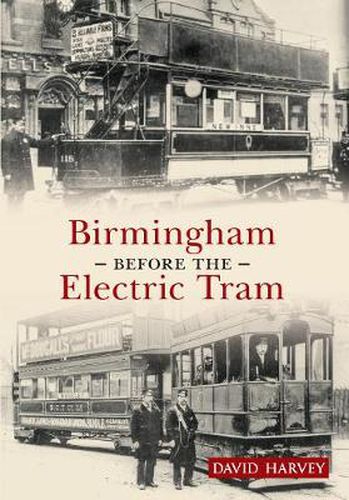Readings Newsletter
Become a Readings Member to make your shopping experience even easier.
Sign in or sign up for free!
You’re not far away from qualifying for FREE standard shipping within Australia
You’ve qualified for FREE standard shipping within Australia
The cart is loading…






During the nineteenth century, Birmingham grew rapidly, becoming the second largest population centre in England. Tramways were introduced to the city as a more efficient way of transporting this large population. Although the first trams were horse-drawn, more efficient power sources were developed and in this book, David Harvey shows us three which were employed by the City of Birmingham Tramways Company between 1896 and 31 December 1911, following which the company was absorbed by Birmingham Corporation Tramways. City of Birmingham ran routes using steam trams, cable trams (such as are still used in San Francisco today) and battery-powered accumulator trams until these were swept away by the considerably more efficient electric trams which we remember today, their power supplied through overhead cables. In this wonderful collection of period images, David Harvey shows us Birmingham, Britain’s Second City, through its public transport as the nineteenth century turned into the twentieth. This is a vivid look at the architecture and technology of Victorian and Edwardian Britain at its height.
$9.00 standard shipping within Australia
FREE standard shipping within Australia for orders over $100.00
Express & International shipping calculated at checkout
During the nineteenth century, Birmingham grew rapidly, becoming the second largest population centre in England. Tramways were introduced to the city as a more efficient way of transporting this large population. Although the first trams were horse-drawn, more efficient power sources were developed and in this book, David Harvey shows us three which were employed by the City of Birmingham Tramways Company between 1896 and 31 December 1911, following which the company was absorbed by Birmingham Corporation Tramways. City of Birmingham ran routes using steam trams, cable trams (such as are still used in San Francisco today) and battery-powered accumulator trams until these were swept away by the considerably more efficient electric trams which we remember today, their power supplied through overhead cables. In this wonderful collection of period images, David Harvey shows us Birmingham, Britain’s Second City, through its public transport as the nineteenth century turned into the twentieth. This is a vivid look at the architecture and technology of Victorian and Edwardian Britain at its height.